Bonaire is one of the top diving destinations in the world. Known as the “shore dive capital of the world,” it is touted for its accessibility, its reefs, and the number of fantastic dive sites. I hope this diving guide will help you plan your trip, from which dive sites to check out to all the things to expect.

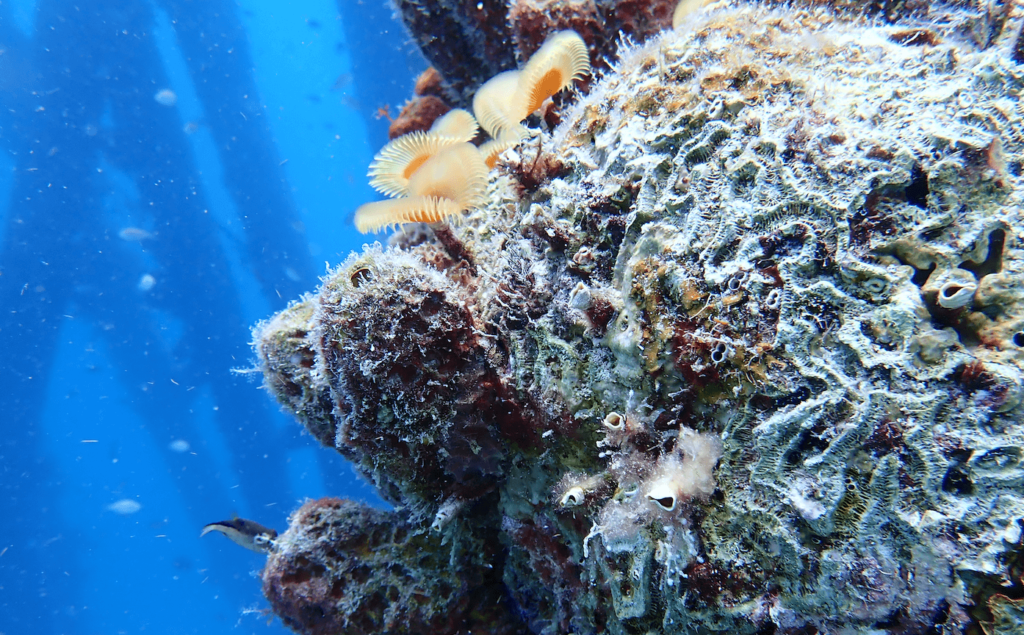
Will and I talk diving with our friends Dan and Abby a lot, and since Abby’s friend rents out a house on Bonaire, it gave us the opportunity to plan a trip to take advantage of an affordable place to stay. We had a great time!

With 86 shore dive sites around the island, you can easily rent gear, drive to a dive site, and jump in! Read on for more information about diving in Bonaire.

Bonaire Diving Quick Tips
- Bring reef-safe sunscreen, which does not have oxybenzone and octinoxate. Bonaire has banned sunscreens that are not reef-safe. Sunscreen for babies is usually reef-safe and more affordable or check out Stream2Sea.
- You’ll want fins with booties since many of the dive sites have rocky shores.
- Bonaire diving is for all levels of experience. We dove a maximum of 90 feet and on most dives, we stayed around 60 feet. The only dives I would have liked to go deeper are Invisibles and Hilma Hooker.
- If you’re doing your own shore dives, you’ll need to rent a truck. We used AB Car Rental and it’s the go-to on the island. You’ll see their white trucks everywhere. (Buddy Dive also rents out white trucks as part of their packages.) We were instructed to never lock our car doors. Leave valuables in your car at your own risk. I had my phone hidden in the car so that I could take photos and it ended up being ok.
- You’ll need to pay a $45 USD marine park fee to dive. You can get this tag at a dive shop when you rent equipment. It’s valid for one year. If you happen to lose your tag, be sure to have your receipt handy.

Where to Stay in Bonaire
Most visitors stay near downtown Kralendijk for easier access to dive shops and dive sites. We rented a house in Tera Kora (closer to the airport) and it was a bit more affordable because our food costs were flexible. The house was in a local neighborhood but we never felt unsafe and it was a quick drive to the grocery store and dive shops. You can look for house rentals on Vrbo.

If you’d rather have your accommodations and dive shop in the same place, here are some options. If you will be shore diving on your own, be sure your package includes room, dive, and car rental.
- Buddy Dive Resort
- Stay & Dive
- Divi Dive
- Wannadive
- Captain Don’s Habitat
- Dive Friends, the dive shop we used, has locations at Courtyard Marriott and Delfins Beach Resort if you want to stay in a hotel yet be close to a dive shop.


Best Bonaire Dive Shops
We used Dive Friends for our equipment rental and air/nitrox. The process was easy and the staff was friendly and helpful. We got dive site tips from them and even learned how to change an o-ring. They have seven convenient locations on the island, and we visited whichever location was closest to get new tanks. They have a limit of two tanks per person, so we were at one of their shops at least once a day. I think we ended up going to all of them! While we hung up all our gear at the house every day, we stopped by Dive Friends to rinse our gear before we went home. I also liked that Dive Friends has water coolers to refill your water bottles when you’re picking up tanks.


Most of the dive shop options are listed above since they are also dive resorts and I’d also add AB Dive to the dive shop list.

Planning Your Bonaire Dives
Our friend Dan was the master dive planner for our trip. We got two books that helped us immensely. Since there are so many dive sites, we looked for recommendations on the internet and also talked to people at the dive shop. We then used these books to help us find the dive site, plan our dive, and know what to look for. The Reef Smart Guide Bonaire book gave dive maps and a recommended dive route, which was helpful to visualize the dive. The Bonaire Shore Diving Made Easy book was good for locating the dive site and getting in the water. If I had to pick one, I would get the Reef Smart Guide.


Locating the dive sites is fairly easy. Be sure to grab a dive site map from your car rental or dive shop. On the side of the road, look for the yellow rocks with the dive site name.
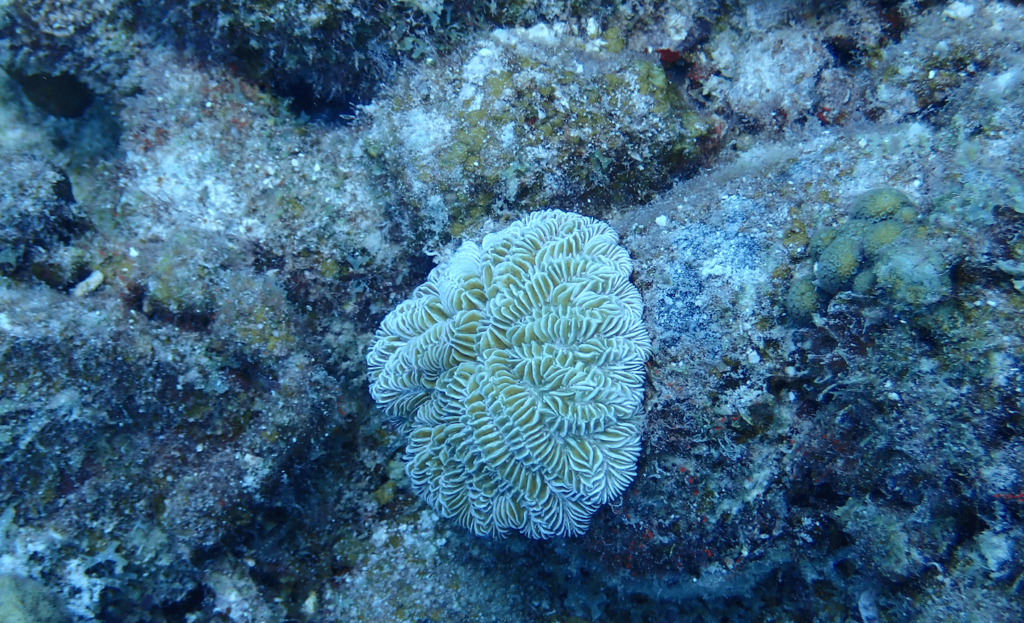
Since we were allowed two tanks per person, we planned on grabbing new tanks before we went north or south for two more dives. It’s efficient to plan out your dives this way so you’re not wasting time, energy, and gas!
Another way to save time is to pack your lunch. We had a few days of sandwiches and chips in between dives. Freeze water bottles and put them in a cooler bag with the sandwiches. Freezing your water will also keep give you cold water throughout the day as it melts. We also refilled our water bottles at Dive Friends as we picked up new tanks. Don’t forget snacks! I recommend stroopwafels. 😉

Doing three dives a day, we were usually in the water by 8-9 a.m., 11 a.m. – 12 p.m., and 2-3 p.m. Starting early made it seem like we were beating the crowds. If you have the energy, I think it’s possible to do four dives a day if you start early or if you want to do a night dive.

Best Dive Sites in Bonaire
We did 16 dives in Bonaire and were amazed by the vibrant reef. You’ll see colorful coral, many different species of fish, and hardly any other divers. Some of the dive sites are very similar. It is the same reef after all, but you never know what you’ll see. A few of the sites you’ll have an aquarium effect where you feel like you’re surrounded by fish.


These were my top five dive sites in Bonaire:
1. Something Special
We dove this site early on in our week and spotted a large variety of species. It was an easy entry, had plenty to see, and an altogether solid experience.
2. Salt Pier
The reef has built up along the pier’s structure, so it adds a little variety to the dive. You’ll encounter schools of fish and lots of variety. We spotted a sea turtle, barracudas, and flounder, among many others. Being the most popular dive site on Bonaire, this one can get a little busy.

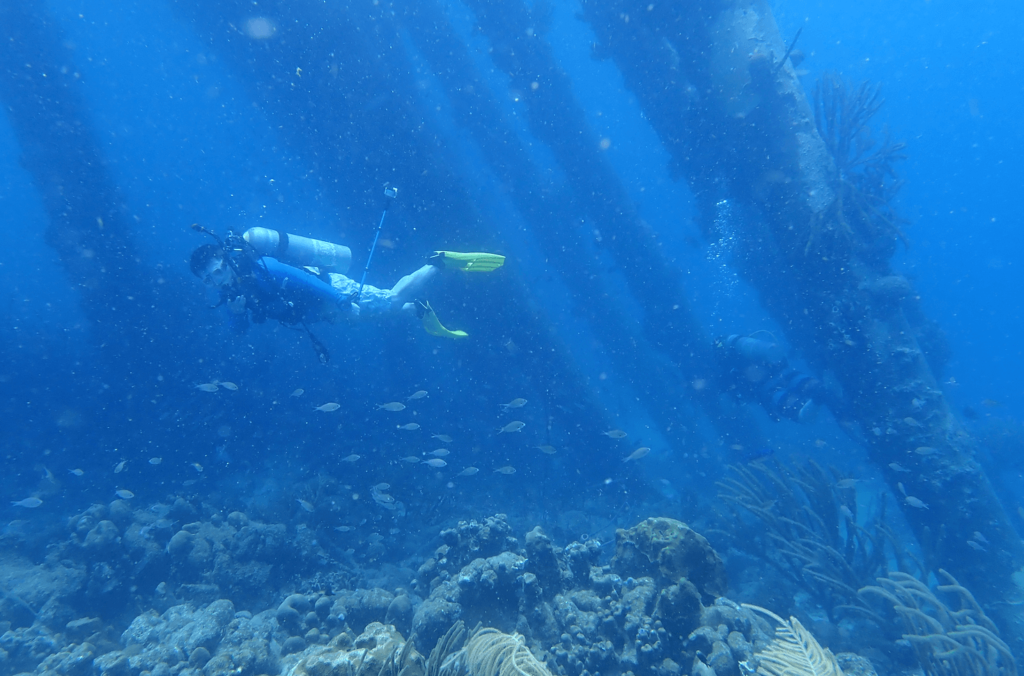

3. 1000 Steps
Yes, the steps are terrible, especially after your dive, but thankfully, it will only feel like there are 1,000 of them instead of actually being 1,000 of them. If you can conquer the steps, you’ll be rewarded with diving an incredible reef.
4. Karpata
Along with a vibrant reef, the typography of Karpata makes this dive interesting. The reef wall curves in and out. You’ll see similar wildlife as in 1000 Steps.
5. Turtle City
We did this boat dive on the east side of the island and it lived up to its name. I lost count but our dive guide spotted 42 sea turtles on our dive! We also saw a pair of spotted eagle rays, which are always a highlight for me. I thought it was a great dive to do at least once to see the number of turtles in one place.

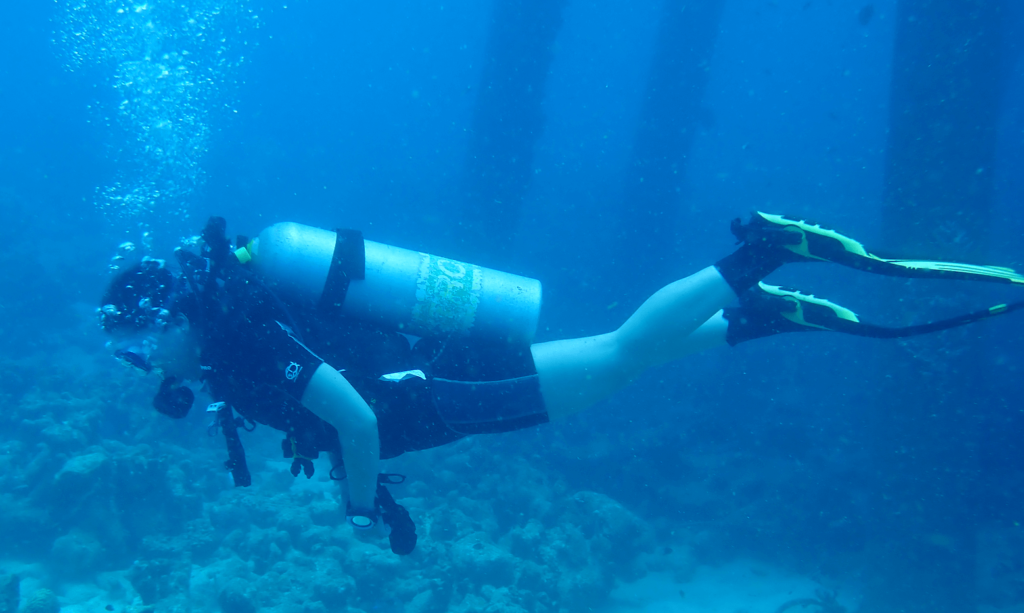
Close behind, here are the other notable dives we did:
- Oil Slick Leap: You’ll take a giant, high stride into this dive site, but that’s all part of the adventure of it.
- Hilma Hooker: Want to mix it up? Visit the Hilma Hooker wreck. You’ll see a big, hollow cargo ship with many tarpons around it. Because this is one of the deeper dives on Bonaire, many do this one as the first of the day. Get there early to avoid the crowd.
- Invisibles: Divers love this site because of the double reef. I didn’t love this site because it’s huge and we took it very fast. But it was cool to see and I might have liked it better if we visited only one part of the reef. You could dive this twice and visit different parts. We were at this site again at night to see the ostracods (more on that below) and seeing a squid on our way out was a highlight of my trip.
- Jeff Davis Memorial: Recommended by the dive shop folks, we dove this site up north. Similar to 1000 Steps and Karpata, its abundance of species makes it noteworthy.

Here are some other top/recommended dives we didn’t do:
- Punt Vierkant
- The Lake
- Alice in Wonderland
- Angel City
- Andrea 1 & 2
- Bari Reef

Should I Do a Boat Dive in Bonaire?
Many divers only do shore dives because of the cost and schedule flexibility. However, there are rocks and rolling waves to navigate on the entry and exit, which might be hard for some to do. If you’re not comfortable with shore diving, boat diving may be easier for you to get in and out of the water. Divers also do boat dives to locations not accessible by land, such as the east coast or the nearby island of Klein.

We did a two-tank boat dive with Bonaire East Coast Diving, specifically for Turtle City. While it was a life list type of experience to see so many turtles on one dive and a top five dive for my Bonaire trip, it was a checked box and not something I need to do again in Bonaire. The waves are very intense on the east side and I should have taken sea sickness medicine! You are able to see sea turtles on the west side but not as many in one place.

What Sea Life to See in Bonaire
With over 350 fish species and 57 types of coral, you’ll love discovering something new!
First, you’ll see many of the Caribbean fishes you may be familiar with, such as parrotfish, snapper, triggerfish, barracuda, green moray eel, spotted moray eel, trumpetfish, squirrelfish, angelfish, porcupinefish, and filefish.

The bigger things you’ll see are southern stingrays, spotted eagle rays, sea turtles, and nurse sharks. While Bonaire has hawksbill and loggerhead sea turtles, the most common is the green turtle.

Unique sightings are the peacock flounder, scorpionfish, honeycomb cowfish, and sand diver lizardfish.



For small things, look out for flamingo tongue (sea snail), Pedersen cleaner shrimp, and arrow crabs.

Rarer are the frogfish, flying gurnard, and seahorse. We only saw a frogfish, but we were very excited about the sighting.
Don’t Miss the Ostracods
Ostracods are small crustaceans that glow to attract a mate. The best time to see them is five days after a full moon. Pick a spot at the edge of the reef and do not turn on any lights. The show should start 20 minutes after sunset, so make sure you’re in place before it gets too dark. It’s good to find a sandy spot and sit on your knees. For the dive site, pick one south of Salt Pier or north of Oil Slick Leap. You don’t want to be near Salt Pier because it will be too bright. Also, think about the ease of entering and exiting in the dark.

We picked Invisibles because of its easy entry. The water temperature was warmer than I thought it would be at night. Our last day was only two days after the full moon, so the glow was weak, but we did see it! The ostracods would light up in dots from bottom to top in a wavy line. I can only imagine how much brighter it would be five days after the full moon and I hope to see it one day! We waited for a while, until we got cold, and then swam in, which was an adventure in itself. There were millions of small silver fish following our lights and it looked a little terrifying to have to swim forward through them.

Bonaire dive shops do guided ostracod dives if you’re nervous about doing it on your own. The shops can also give you more information about where to go and how the dive should go.
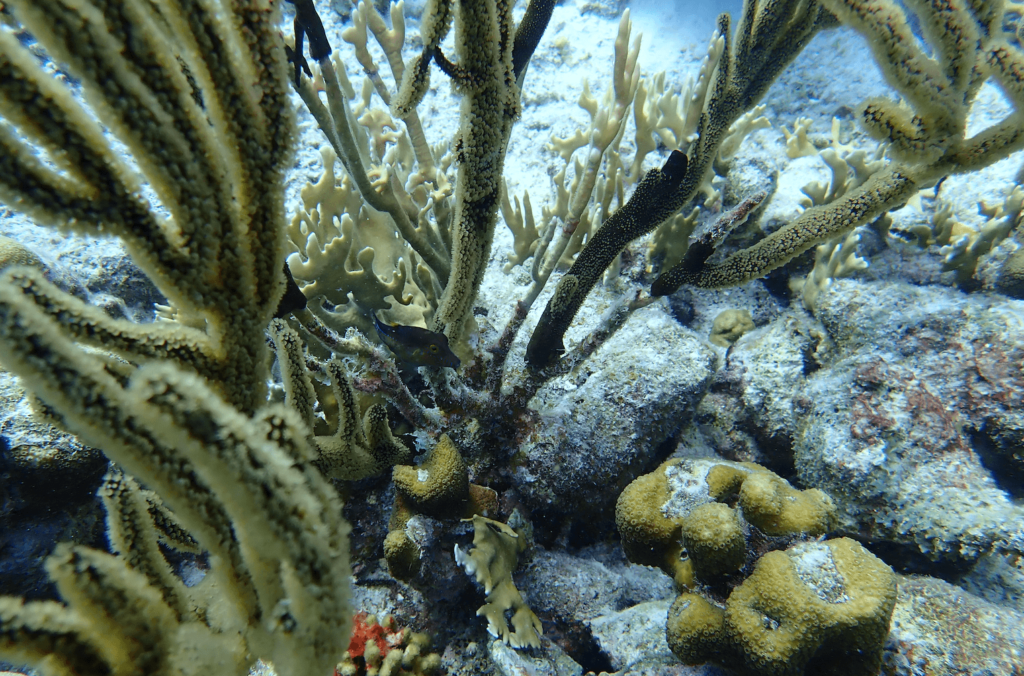

Conclusion
It’s easy to see why people have dubbed Bonaire a “diver’s paradise.” There are so many dive sites in a close distance and I liked the ease and flexibility of getting into the water. We dove on our own schedule, enjoyed relaxed diving, and reveled in island life. If you get the chance to experience it, don’t miss it!
P.S. Did you see this post about everything we ate and drank in Bonaire? So much good stuff!
Follow the adventures on Instagram, Facebook, Twitter, Pinterest, and Bloglovin’. You can also subscribe to the exclusive email list.







